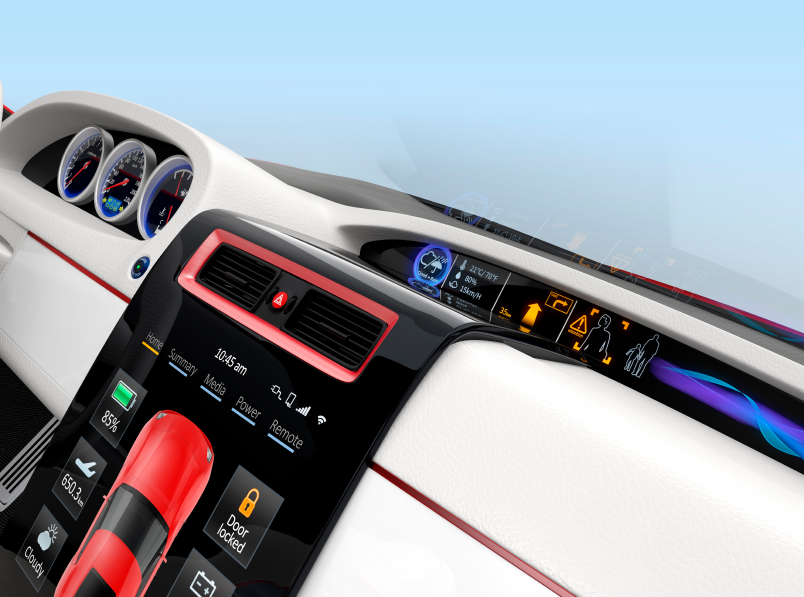
With major events like the Consumer Electronics Show (CES) and the Detroit Auto Show already behind us in 2016, this year has already given us plenty of info on what kind of technology we can realistically expect to see in the automotive world over the next few years. Some of the technologies that are about to emerge on the auto market have been in the works for the past few years, but there have also been a handful of debuts that have come as a pleasant surprise to both car lovers and auto experts alike.
If you’re hoping to pursue an automotive career, you’re probably aware that when it comes to building the cars of the future, automakers have made much faster progress in the last few years than ever before. The good news is that as auto technology races ahead, it’s getting more and more interesting. Let’s take a look at a few examples of auto technology that you can expect to see in production cars by 2020.
1. Active Window Displays will Become Common Auto Technology
Originally, the heads-up display (HUD) allowed drivers to check their vehicle speed on the windshield in bulky green numbers. Things have come a long way since this auto technology debuted nearly 20 years ago. By 2020, we can expect to see automakers using ‘active glass’ that displays lively images to assist vehicle owners in multiple driving conditions.
Companies like Audi, Jaguar, Mercedes, Hyundai, and Land Rover have recently showcased some next-level HUD technology that will make it into production models in the near future. New HUDs will be able to display warning signals before road accidents occur, highlight street signs in proximity to vehicles, and display GPS directions visibly on the windshield as cars approach a turn they need to make.
2. Autonomous Auto Technology will Become a Reality
If you’ve been following auto news at any point recently, you’ve probably noticed all the discussion about self-driving cars. Car companies from all over the world have had both milestones and setbacks when it comes to producing fully-autonomous vehicles, but you can expect them to be on the roads to some extent early on in your automotive career.
Keep in mind that when it comes to self-driving cars, half of the battle is developing and perfecting the technology, and the other half is cities and provinces developing laws and regulations that govern when and how that technology will be allowed on the road. The technology already exists, and by 2020 we’ll likely be seeing many more cars with self-driving capabilities on the streets.
Auto technology experts say that it may take another 10 years before we start seeing cars that can drive anytime, anywhere on the roads without a driver. However, not long after you complete your auto mechanic training, we might start to see sanctioned sections of highway that permit autonomous driving under safe weather conditions.
3. Auto Technology that Saves Lives
Last year, Ford announced that it was in the early stages of developing and testing technology that monitors driver health. The system uses sensors on the seatbelts, steering wheel, and console to measure heart rates and body temperature, and will alert the appropriate services if there’s an emergency.

Ford’s health monitoring system is still in the works, but should be available as an option in production vehicles by 2020. When health monitoring systems are paired with autonomous car tech, vehicles could be able to sense trouble, alert paramedics, and themselves pull over to the side of the road when drivers have heart attacks or strokes, for example.
Want to register for an automotive technology program that will prepare you for the next wave of production cars?
Visit ATC for program details, and to find out how to get started!

